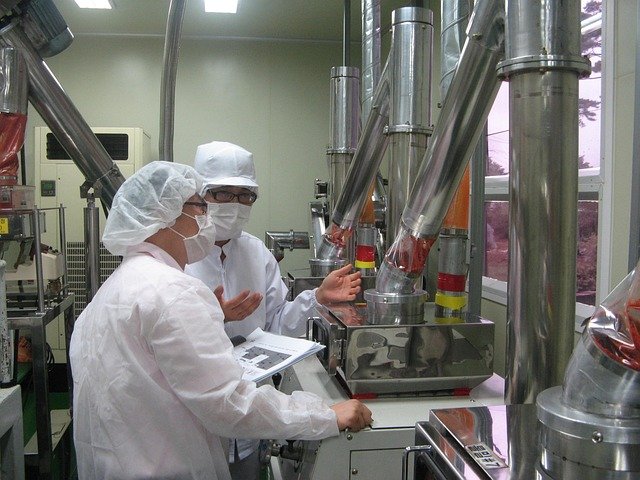Biomanufacturing: Revolutionizing Industrial Production
Biomanufacturing is reshaping the industrial landscape, offering sustainable alternatives to traditional production methods. This emerging field harnesses biological systems to create products ranging from pharmaceuticals to textiles, presenting a paradigm shift in manufacturing. As industries seek eco-friendly solutions, biomanufacturing stands at the forefront of innovation, promising reduced environmental impact and enhanced product quality.

The field gained momentum in the 1970s with the development of recombinant DNA technology. This breakthrough allowed scientists to manipulate genetic material, paving the way for the production of complex proteins and other biomolecules. Early applications focused primarily on the pharmaceutical industry, with the production of insulin being a landmark achievement.
As the technology progressed, biomanufacturing expanded beyond pharmaceuticals. Today, it encompasses a wide range of industries, including agriculture, energy, and materials science. The ability to engineer microorganisms to produce specific compounds has opened up new possibilities for sustainable production methods.
Biomanufacturing Techniques and Applications
Biomanufacturing employs various techniques, each suited to different applications. Fermentation remains a cornerstone, utilized in the production of biofuels, organic acids, and certain pharmaceuticals. Cell culture technology, particularly mammalian cell culture, is crucial for producing complex proteins and antibodies used in medical treatments.
Enzyme-based processes have found applications in industries ranging from food processing to textile manufacturing. These biological catalysts offer advantages in terms of efficiency and environmental impact compared to traditional chemical processes.
In recent years, the emergence of synthetic biology has pushed the boundaries of biomanufacturing. This interdisciplinary field combines biology, engineering, and computer science to design and construct new biological parts, devices, and systems. Synthetic biology has enabled the creation of novel organisms capable of producing materials with unique properties, such as spider silk proteins or biodegradable plastics.
Economic and Environmental Implications
The economic potential of biomanufacturing is substantial. According to recent market analyses, the global biomanufacturing market is expected to grow at a compound annual growth rate of over 9% in the coming years. This growth is driven by increasing demand for biopharmaceuticals, sustainable materials, and eco-friendly production processes.
From an environmental perspective, biomanufacturing offers significant advantages. Many biomanufacturing processes operate at lower temperatures and pressures compared to traditional chemical manufacturing, resulting in reduced energy consumption. Additionally, the use of renewable feedstocks and biodegradable products aligns with circular economy principles, minimizing waste and resource depletion.
Challenges and Future Directions
Despite its promise, biomanufacturing faces several challenges. Scaling up production from laboratory to industrial levels remains a significant hurdle. Maintaining consistent product quality and meeting regulatory requirements, particularly in the pharmaceutical sector, requires sophisticated process control and quality assurance systems.
The development of efficient and cost-effective downstream processing techniques is another area of focus. Separating and purifying the desired product from the complex biological mixture can be resource-intensive, impacting overall production costs.
Looking ahead, advances in genetic engineering, particularly CRISPR technology, are expected to accelerate progress in biomanufacturing. The ability to precisely edit genomes opens up possibilities for creating highly optimized production organisms.
Artificial intelligence and machine learning are also poised to play a crucial role in biomanufacturing. These technologies can help optimize process parameters, predict product yields, and enhance quality control measures.
Key Insights for Business Leaders
• Assess biomanufacturing potential: Evaluate how biomanufacturing could enhance your product portfolio or improve existing processes.
• Invest in R&D: Allocate resources to explore biomanufacturing technologies relevant to your industry.
• Build partnerships: Collaborate with biotechnology firms and research institutions to access cutting-edge expertise.
• Focus on sustainability: Leverage biomanufacturing to improve your company’s environmental footprint and meet growing consumer demand for eco-friendly products.
• Prepare for regulatory challenges: Stay informed about evolving regulations in biomanufacturing, particularly in highly regulated industries like pharmaceuticals.
As biomanufacturing continues to evolve, it presents both opportunities and challenges for businesses across various sectors. By embracing this technology, companies can position themselves at the forefront of sustainable and innovative production methods. The integration of biomanufacturing into industrial processes not only offers economic benefits but also aligns with global efforts towards more sustainable and environmentally responsible manufacturing practices. As we move forward, the synergy between biological sciences and industrial production will undoubtedly play a crucial role in shaping the future of manufacturing.





